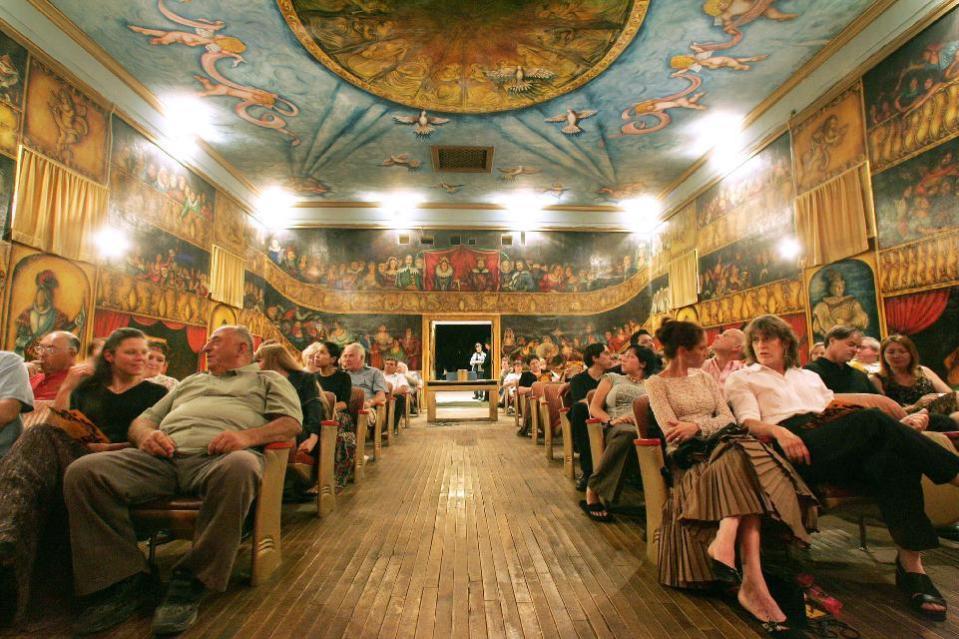Stranded by flat tire, Marta Becket made the desert dance
CARSON CITY, Nevada (AP) — A ballerina who drew audiences from around the world to an abandoned Mojave Desert stage she adopted after being stranded there by a flat tire in 1967 has died at the age of 92.
Marta Becket was stranded near the ghost town about 95 miles west of Las Vegas and said she felt destined to revive it.
With one glimpse inside an abandoned social hall there, Becket saw the other half of her life, she told The Associated Press in 2001. A native New Yorker who had performed on Broadway and at Radio City Music Hall, Becket moved West to renovate the dilapidated building that's now an artistic sanctuary known as the Amargosa Opera House.
Louis Kavouras described Becket's shows as vaudevillian, an assemblage of brief dramatic and comedic pieces, but always with a strange and contemporary twist. Kavouras, chairman of the University of Nevada, Las Vegas Department of Dance, said Becket's art never failed to surprise him.
He was mystified when he saw Becket in 1992, then in her late 60s, rise to her toes and float across the stage in a difficult, shuffling ballet move known as a pas de bourrée.
"It was magic," Kavouras said, "like the hot desert wind flowing across the desert sand."
She continued flitting across the stage in her iconic performances well into her 80s, although health problems slowed her in later years. She gave a final performance in February 2012, before turning the theater over to a nonprofit group.
Tom Walker, a city councilman in North Cowichan, British Columbia, said he and his wife stumbled upon Becket's act about 15 years ago during a winter RV trip. He described Becket as a kind, memorable woman, then in her 70s, who talked with him and his wife for 45 minutes after the show and performed for them again on pointe.
"She said at the time she was probably the oldest person who could still do that in her ballet slippers," Walker said.
Becket and her husband rented the building, and Marta Becket made her debut in 1968 at the renamed Amargosa Opera House. In the beginning, her only patrons were the three Mormon families who lived in the isolated town.
The nearest town is 23 miles away from the opera house, but audiences filled its 114 theater seats so many times over the years that extra chairs sometimes had to be brought in.
"It was the spirit of the pieces that I think was so moving in her work, and I think that had a lot to do with where it was and how you discovered it," Kavouras said.
Becket wrote songs, dialogue, sewed costumes and painted sets. She danced every Monday, Friday and Saturday whether the house was full or empty — as if thousands were watching.
She spent six years drawing and painted imaginary fans on the opera house's walls and painted the ceiling with a blue sky, dancing cherubs, clouds and doves.
"I love dance. I love ballet. It's the world I want," she told The Associated Press 2001. "It's mystifying. I feel as if this is what I was intended to do."
Her husband left in 1983, leaving Becket and her longtime friend, emcee, stagehand, stage manager and silent sidekick Tom Willett as the town's only residents. Willett died in 2005.
Her story was captured in 2000 in the award-winning documentary "Amargosa."
Becket's autobiography, "To Dance on Sands," was published in 2006.
Jeff Mullenhour, Inyo County deputy coroner, said Wednesday the cause of Becket's death had not been determined. She passed away at her home in Death Valley Junction, California, earlier this week.



